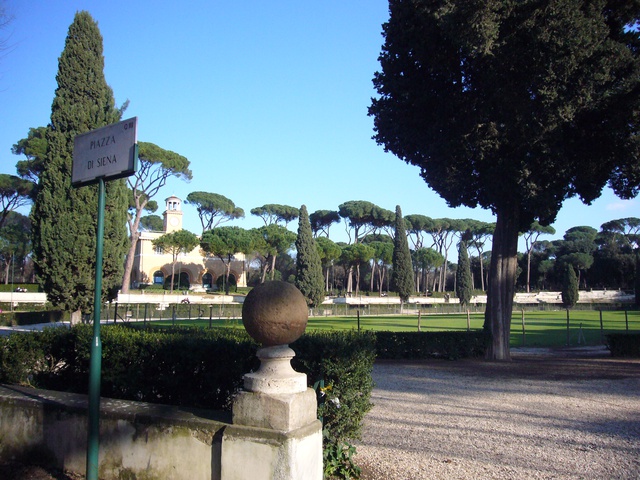Places in Time: The Pines of Rome

In the San Diego Symphony’s month-long celebration of percussion and rhythm in the It’s About Time festival, we’re exploring how percussion connects us to nature and how music can deepen connections within ourselves and with each other. The SDSO’s concert “Places in Time” touches on all those themes and more in a quintessential classical concert, featuring Respighi’s most popular work.
Composer Ottorino Respighi’s The Pines of Rome gloriously pays homage to topographic scenes around Rome and is the second tone poem in a triptych of works paying tribute to the Eternal City. Composed in 1924, this is Respighi’s most famous and requested work, so much so that he used his earnings from the piece to buy a villa aptly named, “The Pines.”
The composition follows four movements, all performed continuously and without interruption to mimic the continuity of nature. Each movement represents different pines throughout Rome, beginning with children playing outside near the Villa Borghese and concluding with an ancient Roman army marching along the pines near the Appian Way.
The composer himself described the piece as one that uses “nature as a point of departure, to recall memories and visions. The century-old trees which dominate so characteristically the Roman landscape become testimony for the principal events in Roman life.” Respighi focused on painting an atmosphere of emotions with his music. Indeed, Pines of Rome evokes “memories and visions,” nostalgia and optimism for Rome’s past and present. The composition takes us through various places throughout Rome, different moments in time and concurrently, follows the course of a typical Roman day from sunlight to sunrise. We have a multi-faceted look at time and place in Respighi’s classic, which makes it a perfect classical piece for the orchestra to explore during our It’s About Time festival.
The orchestration includes a number of unusual instruments, including a huge percussion battery – timpani, triangle, cymbals, tambourine, ratchet, bass drum and tam-tam. Respighi studied orchestration under master Rimsky-Korsakov and for principal timpanist Ryan DiLisi, Respighi took orchestration to a higher level with this piece.
“The first movement is brilliant and shining … It has the breathless energy that any adult who has spent time with a child running around outside can feel in the music. The third movement is one of the most beautiful, depicting pine trees during a full moon on Janiculum Hill. It's peaceful, glowing, and at the end of the movement, Respighi wrote that a recording of nightingales be played, and it's truly a magical moment that transports you there if you close your eyes and listen to the rustling in the strings,” DiLisi said.
An edited section of The Pines of Rome can actually be seen in Disney’s Fantasia 2000. While no flying humpback whales will be on display at the Copley Symphony Hall, for DiLisi the performance will be a special one.
“This was the first real orchestra concert I attended. The audience was packed, the orchestra was excited, and the energy of that performance started a passion for classical music in me that I have to this day. I'll never forget this moment, and to this day, Pines of Rome still gets the same emotional reaction out of me as it did 20 years ago,” DiLisi said.
The San Diego Symphony Orchestra will perform Pines of Rome on January 20 and 21 at the Jacobs Music Center. Check back in with the Cultural Omnivore for more cultural bites and behind-the-scenes notes at the Symphony.
This post was written by Kelly Hillock, marketing assistant for the San Diego Symphony.
Share ArticleBack to all posts
